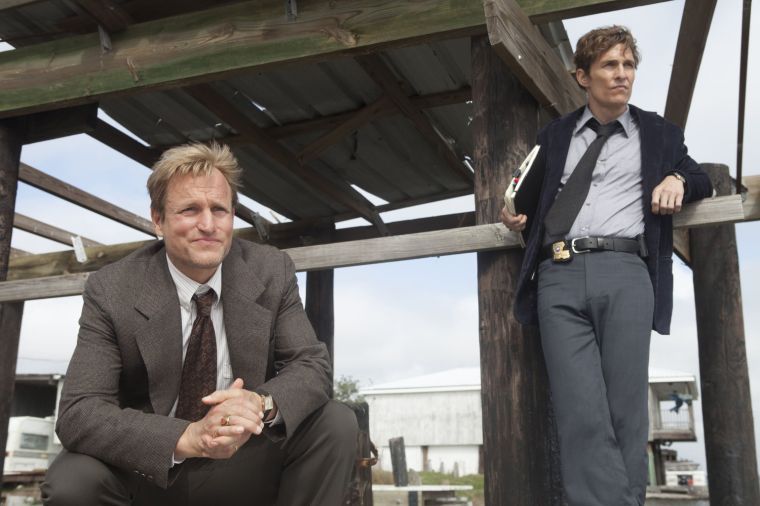HBO’s newest hit ‘True Detective’ takes its stars into deep, dark spaces
February 10, 2014
Though both Woody Harrelson and Matthew McConaughey made names for themselves early in their careers as on-screen goof-offs, their recent work has seen the two actors take a far darker turn. HBO’s newest serialized drama, “True Detective,” gives the duo space to explore that new side.
The show tells the story of Rust Cohle (McConaughey) and Martin Hart (Harrelson), two partnered homicide detectives investigating the gruesome and ritualistic killing of a young woman in 1995 Louisiana. Told as a flashback, both are being interviewed about a case they worked together 17 years prior in the hope that it might shed light on a copycat murder.
In the first episode, Hart and Cohle are called out to a sugar cane field, where the body of Dora Lange was found with satanic symbols etched in her skin and deer antlers perched on her head. Hart and Cohle are assigned to the case and sense another similar kill is imminent.
On the surface, this show has all the makings of a typical detective series. McConaughey and Harrelson seem to be playing your run-of-the-mill detective pairing, investigating a serial murderer. Hart presents himself as your typical good-guy cop, with a wife and two young daughters. Cohle, on the other hand, plays the very cliched role of the enigmatic yet brilliant detective, capable of breaking the case wide open with his unorthodox methods.
Despite the show’s appearance as just another murder-mystery series, there is something that makes this show impossible to ignore. Certainly the duo of McConaughey and Harrelson will draw viewers in, as the two are known more for their success on the big screen than on television. However, considering that this is a detective series, it’s surprising that the crime, itself, has hardly been explored — to the extent that Cohle and Hart’s superior, Maj. Ken Quesada (Kevin Dunn), threatens to pull the case from them, citing too little progress in the investigation.
The real mystery of the show is quickly becoming the true identities of the main characters. By the second episode, the viewer’s initial assessment of the two as being overused and cliched has gone out the window. We see with the current-day interviews that these two men are much more than caricatures.
Both Hart and Cohle are juxtaposed with their former selves in these interviews, and it becomes clear to the viewer that they have become completely different men. In one scene, Cohle is a handsome and clean-cut guy; in the next, he is drunk and visibly repulsive, forcing viewers to wonder: What happened to destroy him?
Hart, on the other hand, seems fairly normal and functional during his interviews. And yet as the show progresses, we watch him destroy his family life through excessive drinking and promiscuity. While Cohle is certainly the more nihilistic of the two, he at least understands and accepts the person he is. Hart pretends to be the good guy, justifying his infidelity with the rationale that he needs an outlet to preserve his family life.
Early on, when Cohle is asked by other members of the force to describe the murder, his answer is simple: “Something deep and dark.”
The show’s trajectory remains as much a mystery as the duo’s backstory. However, if the beginning is any indication, “True Detective” promises to be something deep and dark, as well.



